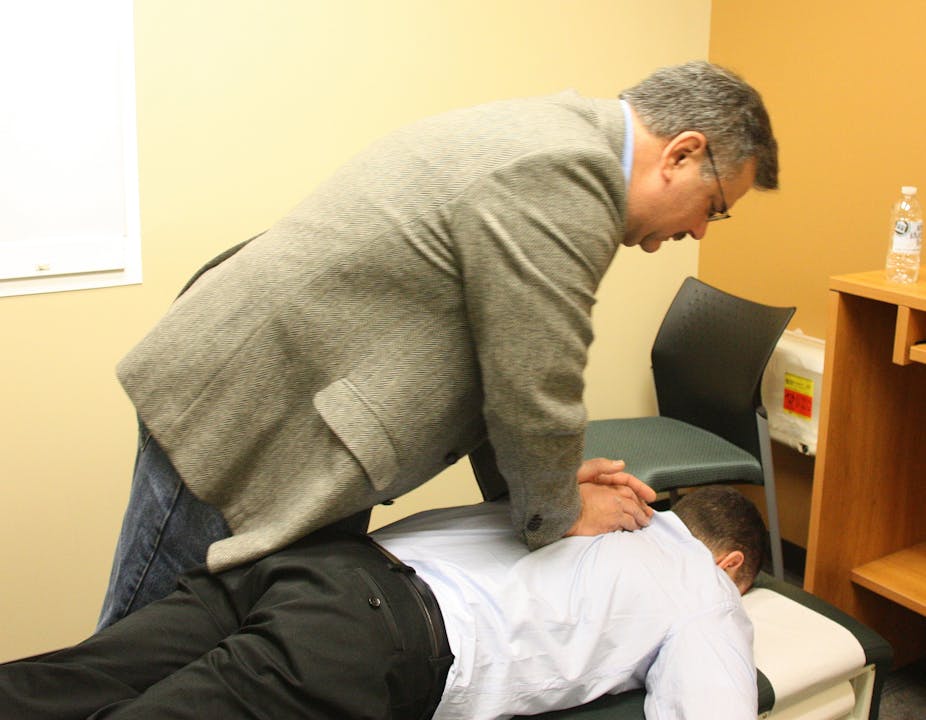A New South Wales general practitioner, who was de-registered by the NSW Medical Tribunal for claiming he could treat any number of serious conditions by “spinal manipulation”, has lost his appeal to the Supreme Court. But the very same claims are made by numerous chiropractors and the same techniques used without a whiff of disquiet from the Chiropractic Board of Australia.
Indeed, there’s some support from the Board for spinal manipulation, which is endorsed by the profession’s peak body, the Chiropractor’s Association of Australia (CAA). So it seems we have one government-appointed registration board de-registering a member for practices that are not subject to any restrictions by another!
In September of 1895, the founder of chiropractic, Daniel David Palmer, noted that the janitor who cleaned his office and had been profoundly deaf for 17 years had a vertebra racked from its normal position. He racked it back into position and soon the man could hear as before.
Shortly after this episode, he noted similar spinal distortions in a man with heart trouble and again manipulation provided immediate relief. From these observations came the theory that 95% of what ails man is caused by spinal distortion of an energy flow (innate intelligence), the integrity of which is essential for health. Spinal cord adjustments, thought Palmer, could correct subtle even invisible distortions.
Many chiropractors dismiss this theory and limit their practice to definite musculoskeletal problems. And there is a soft evidence base to support these manipulations. But others endorse Palmer’s theory and use it to greatly broaden the scope of care they offer. Particularly disturbing are the claims being made for spinal adjustments of children to treat conditions such as autism, attention-deficit syndrome, colic, infections, asthma and bed-wetting.

The CAA describes chiropractic care as an alternative health system distinct from the mainstream that aims to “achieve a fundamental paradigm shift in healthcare direction where chiropractic is recognised as the most cost efficient and effective health regime of first choice that is readily accessible to all people”. Consumers have been warned of the potential dangers inherent in this ambition in a report by Choice Magazine.
The de-registered doctor manipulated spines to treat, among other things, influenza and poor vision. He was furious with the court and claimed to be a whistle-blower exposing the wider medical profession’s unconscionable failure to adopt his techniques. Reading media reports of the case made me wonder if he was somewhat delusional but many a chiropractor would have no such concerns and welcome him and his approach into their club.
The paradox highlighted by this situation is obvious and cause for concern. National registration of practitioners of chiropractic and traditional Chinese medicine was presented as an important advance in protecting consumers, as the new boards would hold members to the highest standards of ethical and credible practice. But when board members accept pseudoscience as ethical and credible, this premise disappears.
Even though modern research shows that (with a few exceptions) acupuncture is no more than a superb placebo, the traditional Chinese medicine board is hardly likely to recommend restricting its current broad and discredited application.
So while the Supreme Court tells a doctor he deserves de-registration, we have a self-serving rather than public-serving government-authorised boards supporting the same practices as if they were good medicine.
It’s time to challenge the Australian Health Practitioner Regulation Agency (APHRA) about registration boards holding members to a standard that rejects approaches to care for which there’s no support from good science or treatments that have been studied and found to be ineffective.

